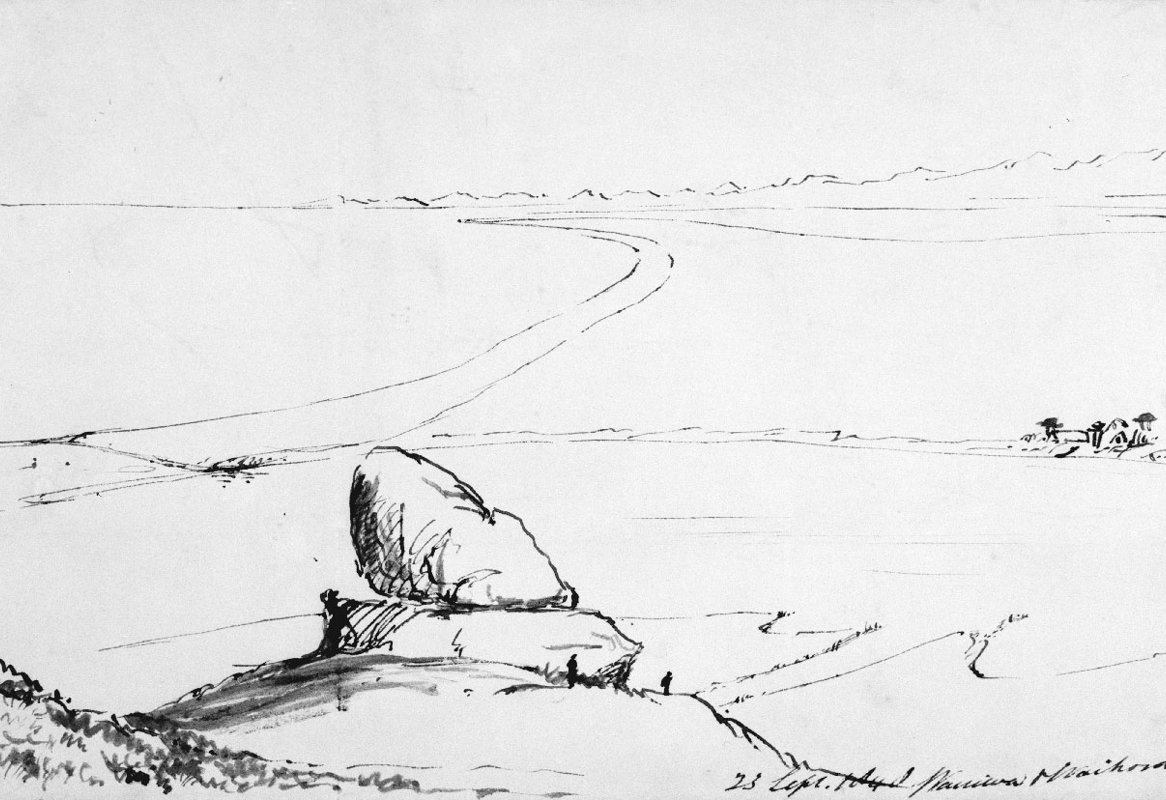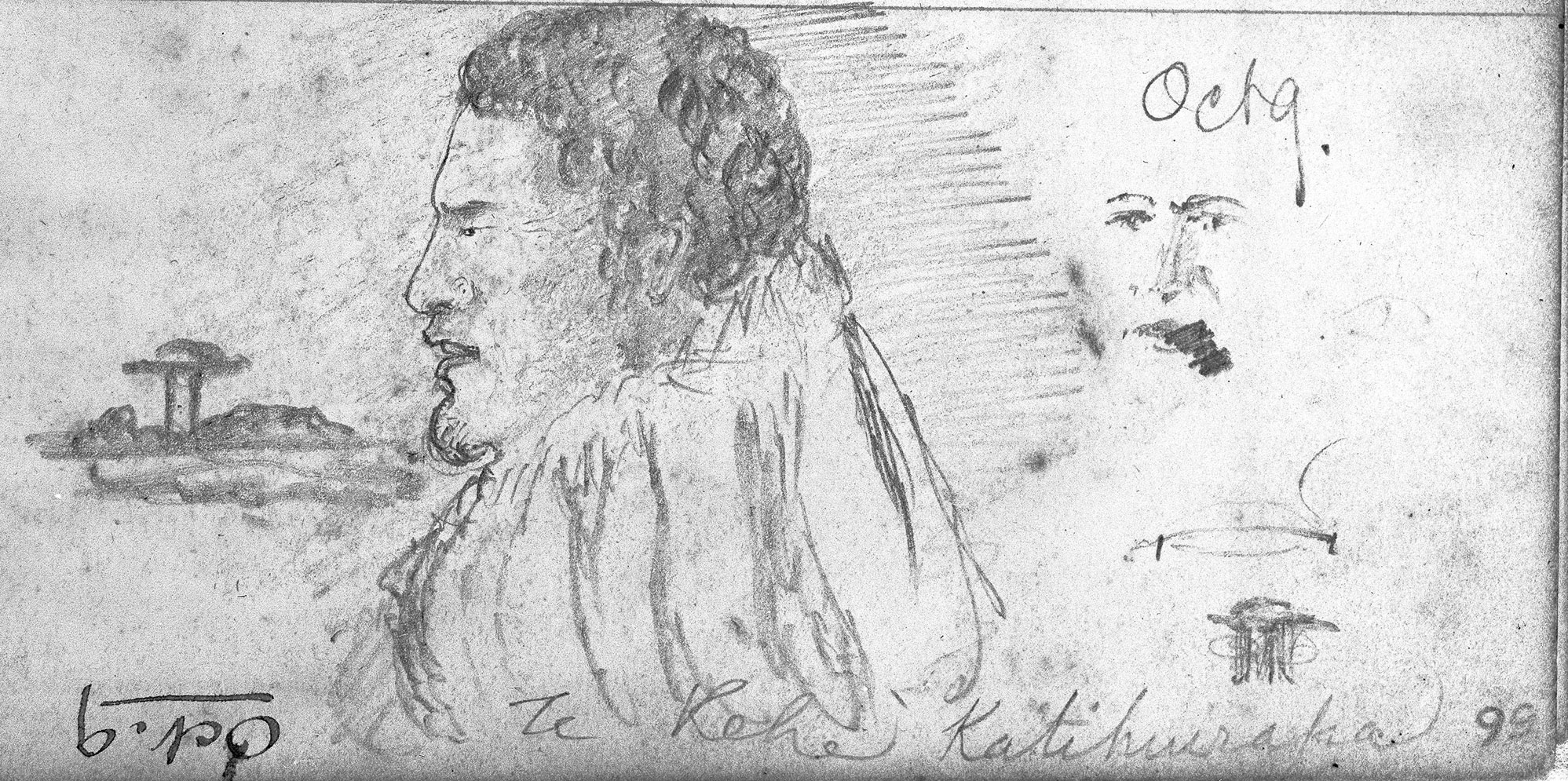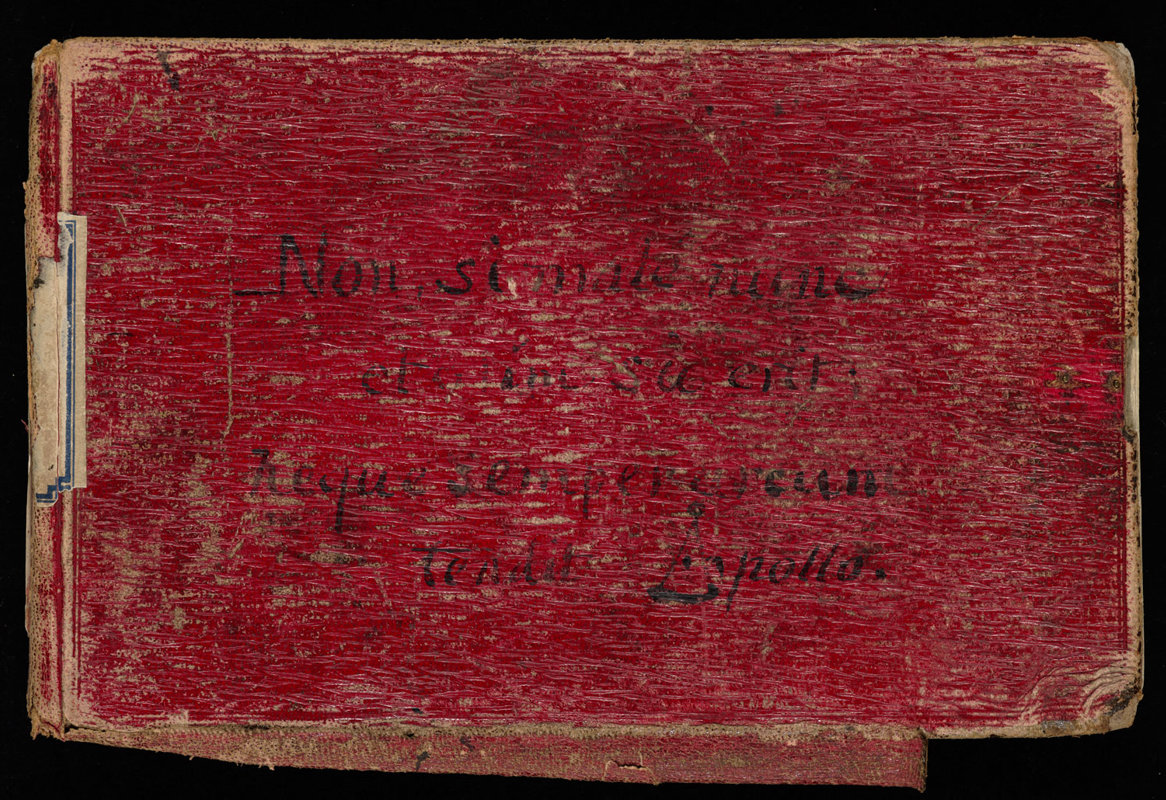Travelling South to North: Tarawhata and Poua guide Edward Shortland 1844
In the summer of 1843-44, Edward Shortland (Protector for the Aborigines) travelled the length of the east coast of Te Waipounamu undertaking a census of the southern Māori population. Accompanied by two Māori guides from the North Island, Shortland’s party was also joined by several different Ngāi Tahu guides on various legs of the journey. Among these guides were Poua and Tarawhata, the sons of the Kāti Huirapa rangatira (chief), Te Rehe.
Poua escorted Shortland from Waikouaiti northward to the commencement of the ninety mile beach at Te Aitarakihi. From there, Te Rehe himself took over as guide, leading the party on to lake Waitarakao where his wife prepared them a meal of fish and potatoes before they proceeded inland to Te Waiateruatī pā on the Ōrakipaoa River for the night. In exchange for payment of a blanket, Tarawhata then assumed guiding duties for the remainder of the journey north.
Setting out from Te Waiateruatī pā, Tarawhata and Shortland travelled past the Ōhapi River where they feasted on tuna (eels) before camping at the Rangitata. The following evening an island in the middle of the seasonally dry bed of the Hakatere (Ashburton River) served as their campsite. On reaching the Whakanui, they filled water bottles left purposely on the banks for travellers as there was no fresh water between there and the Rakaia, a day’s travel away. This ‘desert’ leg of the journey was best undertaken very early or late in the day to avoid the risk of dehydration.
As they travelled, Tarawhata shared his extensive knowledge of the geography of the area with Shortland who was surprised to find that there were Māori names given to many small streams and ravines which he perceived were scarcely worthy of notice. Tarawhata also described and named the interior sources of the Rangitata and Rakaia Rivers.
From the Rakaia to the kāinga of Taumutu, Shortland and his party sustained themselves solely on kāuru, a nutritious sweet food produced from the cooked stems and roots of the tī kōuka (cabbage tree). The final stretch of the journey took the party along Kaitōrete, the large shingle bank separating Te Waihora (Lake Ellesmere) from Te Moana-nui-a-Kiwa (the Pacific Ocean). The hard relatively barren surface of Kaitōrete made for easy travelling. Ahead rose the peaks of Te Pātaka-a-Rākaihautū with Wairewa (Lake Forsyth) at its base and thence, the cliffy terminus of the ninety mile beach.






